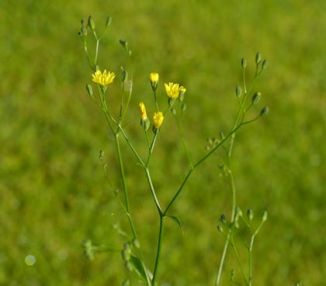Found growing throughout Europe and classed as a garden weed by many, this little wildflower, so easily overlooked, is quite pretty when examined closely. It's of medium height, has spindly, wiry stems and very small 10-20mm dandelion-like flowers which open in sunshine only, from May to October. The flowers are borne in loose panicles. The upper leaves, which are edible, are lanceolate and toothed, while the lower leaves are more oval-shaped. This plant produces large amounts of hairless achenes. It is a native plant and belongs to the family Asteraceae.
I first identified this little plant in my own garden in Dalkey, Co Dublin in 1970 and photographed it in Gibletstown, Co Wexford in 2005.
If you are satisfied you have correctly identified this plant, please submit your sighting to the National Biodiversity Data Centre




